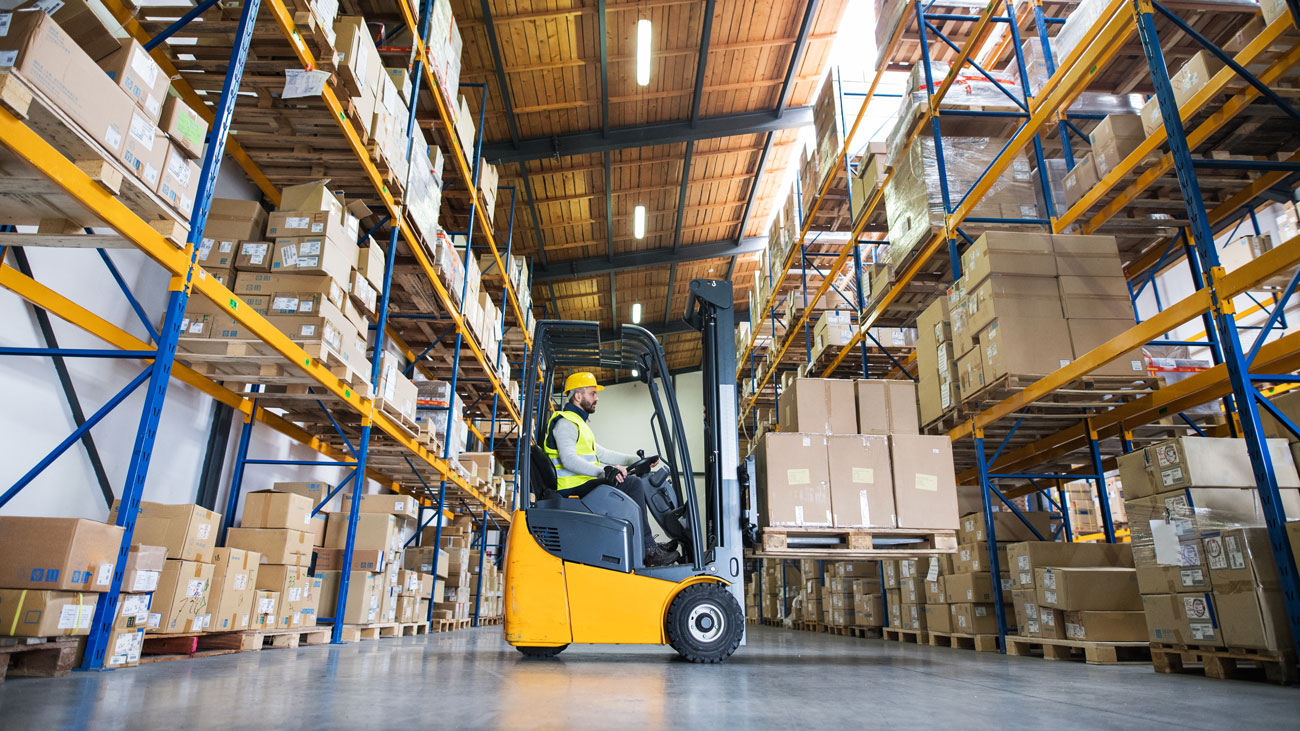
Why are falls from height still the highest cause of deaths?
Work at height continues to be the most common cause of fatal injury, according to the HSE’s latest statistics, published on 6 July.
This could be down to the fact that the type of injury sustained from falls from height is typically more severe than most others, and generally of greater consequence.
Another reason for these numbers could be down to the individual worker or manager’s attitude towards the protective measures in place. Because it is such an obvious hazard, complacency could come into play and lead to an increase in the number of injuries related to working at height.
Unfortunately, progress in reducing fatalities is slow. In 2019, due to concerns over an increase in the number of fall-from-height fatalities, the All-Party Parliamentary Group published a report entitled Staying Alive: Preventing Serious Injury and Fatality while Working at Height, in which it examined the reasons behind falls from height accidents in the workplace with the aim of finding the root causes. It identified several contributing factors, including employee culture and complacency, a lack of planning and understanding, and training inadequacies.
Despite shining a light on these underlying issues, numbers of falls from height are still on the rise, indicating that many employers are failing to carry out suitable risk assessments and implement the necessary precautions.
Are managers doing enough?
In his independent report, Reclaiming health and safety for all: an independent review of health and safety legislation, Professor Ragnar E Löfstedt noted that only “a small number of managers were able to correctly define working at height and very few actually understood the regulatory requirements”. Alongside technical and regulatory training provided to managers, the report also raised concerns about the lack of training in ‘soft skills’, such as how to communicate effectively. This leads to poor supervision of workers and inevitably creates environments where a fall from height is more likely to occur.
What is work at height: a lack of understanding
There appears to be a lack of clarity over what is considered 'work at height', leading to a failure to put in place precautions.
The term actually means work in any place where, if no precautions were in place, a person could fall a distance liable to cause personal injury (for example, a fall through a fragile roof). The regulations define ‘at height’ as a place at which a person could be injured falling from, even if it is at or below ground level. You are working at height if you:
- Work above ground/floor level;
- Could fall from an edge, through an opening or fragile surface; or
- Could fall from ground level into an opening in a floor or a hole in the ground. Working at height can also (but not always) include work below ground such as in basements and cellars.
Working at height does not include:
- Walking up and down the staircase in an office.
- Working in the upper floors of an office block or a Portakabin.
- An operator sitting in a seat on an excavator.
- Sitting in a chair.
Work at height also does not include a slip or a trip on the level, as a fall from height has to involve a fall from one level to a lower level, nor does it include walking up and down a permanent staircase in a building. The key point is that workers don’t need to fall far to be seriously injured or even killed.
Common causes of work at height accidents
There are common causes of falls from height which are not being addressed sufficiently to reduced the number of falls.
Roof work is high risk and falls from roofs, through fragile roofs and fragile roof lights are the most common causes of workplace death and serious injury. As well as in construction, these accidents also occur on roofs of factories, warehouses and farm buildings when roof repair work or cleaning is being carried out.
Contrary to popular belief, ladders and stepladders are not banned under health and safety law. The law calls for a sensible, proportionate approach to managing risk, and ladders can be a sensible and practical option for low-risk, short-duration tasks, although they should not automatically be your first choice. There are simple, sensible precautions you should take to stay safe when using portable leaning ladders and stepladders in the workplace.
Another risk of working at height is equipment falling from height. You may think that the impact of dropped items is less severe, but this too can be fatal. Any number of injuries, from fractures to paralysis and death, can be caused by dropping items from relatively low heights.
Who’s responsible?
A lack of understanding over who’s responsible and the duties around managing work at height safely leads to a failure to implement the relevant safety measures.
As of 2014, over a million UK businesses and ten million workers were estimated to carry out work involving some form of work at height every year. Employers, facilities managers, building owners and anyone else who controls work at height, including the self-employed, can be held responsible should an accident occur. They would be liable if an accident occurred and equipment was found to be faulty or uncertified. These individuals and organisations have a legal responsibility to ensure that the Work at Height Regulations 2005 are implemented and that all activity is properly planned, supervised and carried out by competent persons. The Regulations place duties on employers, the self-employed and any person who may contract individuals to work at height, including building owners, facilities managers or householders.
The employer (or organisation that controls work at height, such as a facilities management company) is required to take responsibility for certain duties of care under the Work at Height Regulations 2005. The Regulations state that the employer must ensure that workers have available to them the appropriate work at height equipment, including Personal Protective Equipment (PPE). Workers should also receive appropriate training in the use of that equipment and whilst they are in training with the equipment, they should be properly supervised.
Lack of competence
Regulation 5 of the Work at Height Regulations 2005 requires that every employer should ensure that no person engages in any activity, including organisation, planning and supervision, in relation to work at height or use equipment for such work, unless they are competent to do so or, if being trained, is being supervised by a competent person. You should make sure that people with sufficient skills, knowledge and experience are employed to perform the task. In the case of low-risk, short duration tasks involving ladders, competence requirements may be no more than making sure employees receive instruction on how to use the equipment safely (e.g., how to tie a ladder properly) and appropriate training. Training often takes place on the job; it does not always take place in a classroom. When a more technical level of competence is required, for example drawing up a plan for assembling a complex scaffold, existing training and certification schemes drawn up by trade associations and industry can help demonstrate competence.
Lack of training
For employees to work safely at height they must be properly trained and educated on the risks they will face and best practices to overcome these. Once initial certification is achieved, refresher training should be conducted within the recommended timeframes, although shorter, more frequent, training can be beneficial in ensuring safe practices are consistently followed. When employees regularly complete the same tasks there is the risk that they may go into ‘auto-pilot’ mode. This can result in complacency as employees become desensitised to the dangers they face and therefore make more risky decisions. To reduce complacency, employees should frequently be reminded of the risks faced by their routine tasks. Competence in the workplace begins with thorough and consistent training that is not only proven and to recognised industry standards but is intrinsic to a working career. There are still many who trained ‘on the job’ for their trade in their 20s and have never received any formal training since.
Conclusion
The Work at Height Regulations 2005 have been crucial in raising health and safety standards across all sectors that undertake work at height. However, compliance and enforcement of the regulations have not sufficiently changed behaviour to ensure workers avoid fatalities and serious accidents. The majority of responses to the 2018 All-Party Parliamentary Group enquiry into working at height noted that culture plays a crucial role in whether a fall will occur. The stronger the safety culture within a company, the safer the place of work and the less likely it is that workers will experience a fall from height.
Working at height is a risky business. Risks need to be properly assessed and work carefully planned, even at relatively low heights. Regulation is an important driver for raising standards but compliance alone is not enough. A mature safety culture instils positive safety behaviour while tailor-made product solutions can provide another invaluable line of defence.
Statistics published annually by the HSE consistently demonstrate that working at height remains the single largest contributing factor to workplace fatalities and that almost a quarter of all workplace fatalities occur because of falls from height.
International Workplace’s Working at Height: A Manager’s Guide looks at the definition of working at height and advises how managers can more effectively control it.
Our Working at Height Awareness course helps learners understand the dangers associated with working at heights and implement ways to minimise and control the risks. Find out more here.




